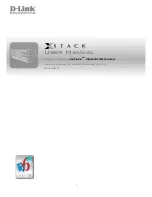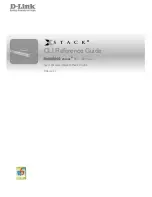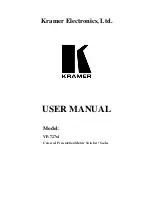
• Make sure that both ends of the cable are connected to the correct ports.
• Verify that both devices have power.
• Verify that you are using the correct cable type.
• Look for loose connections. Sometimes a cable appears to be seated but is not. Disconnect the cable, and
then reconnect it.
10/100 and 10/100/1000 Port Connections
If a port appears to malfunction:
• Verify the status of all ports. See
for descriptions of the LEDs and their meanings.
• Use the
show interfaces
privileged EXEC command to see if the port is error-disabled, disabled, or shut
down. Reenable the port if necessary.
• Verify the cable type.
Interface Settings
Verify that the interface is not disabled or powered off. If an interface is manually shut down on either side
of the link, it does not come up until you reenable the interface. Use the
show interfaces
privileged EXEC
command to see if the interface is error-disabled, disabled, or shut down on either side of the connection. If
needed, reenable the interface.
Ping End Device
Ping from the directly connected switch first, and then work your way back port by port, interface by interface,
trunk by trunk, until you find the source of the connectivity issue. Make sure that each switch can identify
the end device MAC address in its Content-Addressable Memory (CAM) table.
Spanning Tree Loops
STP loops can cause serious performance issues that look like port or interface problems.
A unidirectional link can cause loops. It occurs when the traffic sent by the switch is received by the neighbor,
but notification that the traffic was received from the neighbor is not received by the switch. A broken cable,
other cabling problems, or a port issue can cause this one-way communication.
You can enable UniDirectional Link Detection (UDLD) on the switch to help identify unidirectional link
problems. For information about enabling UDLD on the switch, see the “Information About UDLD” section
in the
IOS-XE Software Configuration guide for the Cisco Catalyst IE 3x00 Switches
, on Cisco.com.
Switch Performance
Speed, Duplex, and Autonegotiation
Port statistics that show a large amount of alignment errors, frame check sequence (FCS), or late-collisions
errors, a common issue when duplex and speed settings are mismatched between two devices.
To maximize switch performance and to ensure a link, follow one of these guidelines when changing the
duplex or the speed settings.
• Let both ports autonegotiate both speed and duplex.
Cisco Catalyst IE3400 Heavy Duty Series Hardware Installation Guide
28
Troubleshooting
10/100 and 10/100/1000 Port Connections











































